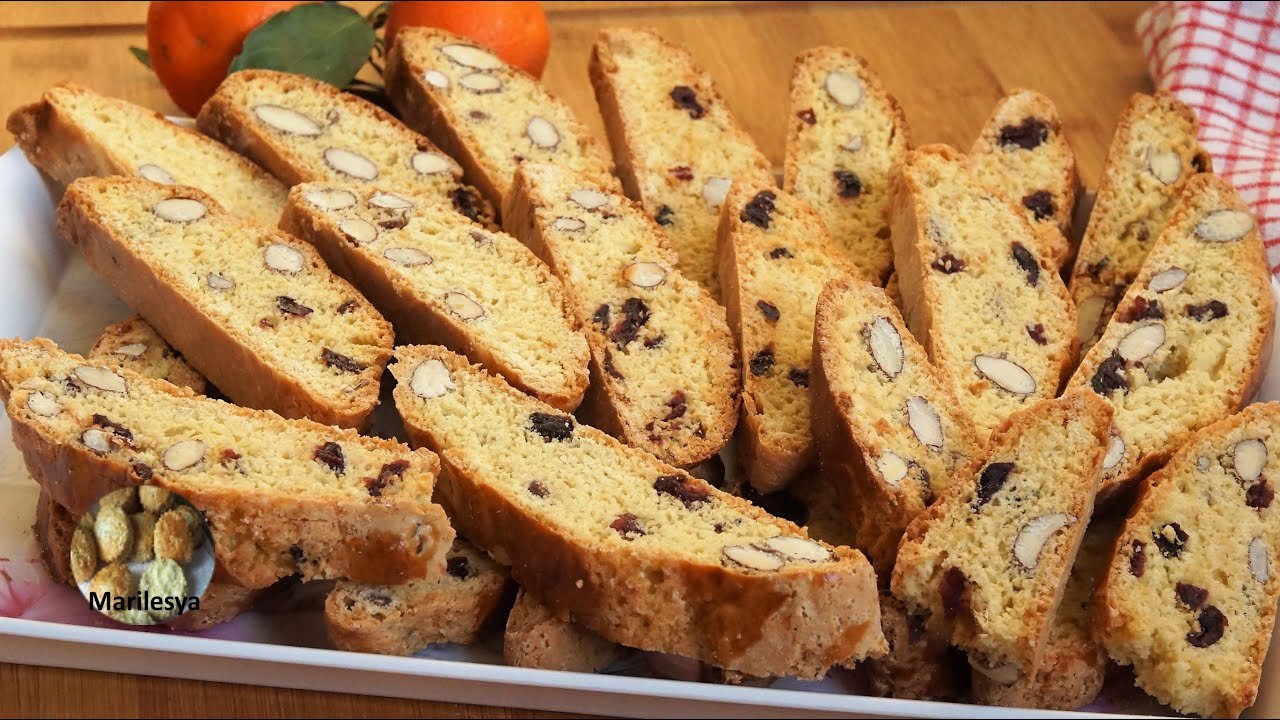Bишкоти ди Прато are twice‑baked almond biscuits from Tuscany. These crunchy cookies are a true Italian dessert. In this article, we explore their history, making, and cultural role.
1. What Is Бишкоти ди Прато?
Бишкоти ди Прато, also known as Biscotti di Prato or Cantucci, are traditional Tuscan cookies. They are hard, dry, and full of whole almonds. Their shape is elongated and rustic. People often drink them with wine or coffee.
2. History and Origins of the Almond Biscuits
The story begins in medieval Tuscany. Early versions of cantucci appeared centuries ago. The first printed recipe came from Prato in the 18th century by Amadio Baldanzi.
In the 19th century, Antonio Mattei, a baker in Prato, perfected the recipe. His Biscotti di Prato gained fame in Italy and abroad. At the 1867 Paris Universal Exhibition, they earned special mention.
3. Simple Ingredients and Their Role
Authentic Бишкоти ди Прато use only:
- Flour
- Sugar
- Eggs
- Whole, unpeeled almonds
- (Sometimes pine nuts, as in Mattei’s version)
There is no butter, oil, milk, or baking powder in the true recipe. That gives them their dry, firm texture.
4. The Double-Baking Method
These cookies are baked twice:
- Dough is shaped into logs and baked.
- Logs are sliced while still warm.
- Slices are baked again until fully dry and crisp.
This method gives Бишкот и ди Прато their signature crunch and long shelf life.
5. Cantucci vs. Biscotti di Prato: What’s the Difference?
In Italy, “cantucci” or “cantuccini” often mean almond cookies. “Biscotti di Prato” refers specifically to the version from Prato without added fats or flavorings.
Cantucci variations may include butter, spices, or yeast—unlike the austere original from Prato.
6. Taste and Texture of these Tuscan Cookies
Бишкоти ди Прато are firm and crunchy. You taste toasted almonds, a mild sweetness, and a rustic bite. They stay intact when dipped in drinks.
7. Traditional Pairings and Cultural Significance
These almond biscuits are more than cookies. They are part of Tuscan tradition. In Tuscany, locals serve them with Vin Santo, a sweet dessert wine. Dipping makes them soft and flavorful.
They also pair well with espresso, cappuccino, hot chocolate, tea, or even grappa.
8. Biscottificio Antonio Mattei: A Historic Site
Antonio Mattei’s bakery, founded in 1858, still operates in Prato today. It continues to use his original methods. Visitors can now tour the factory.
At the tour, guests smell fresh baking, see the logs cut into slices, and taste warm biscotti. Other Tuscan bakeries also make traditional cantucci.
9. Modern Variations
Though the original recipe is simple, many bakers experiment. Variations may include chocolate, pistachios, hazelnuts, dried fruits, or spices.
However, purists value the authentic almond biscuits with no added fats or flavors.
10. Baking Бишкоти ди Прато at Home
Try this simple method at home:
- Mix flour, sugar, eggs, whole almonds (plus optional pine nuts, salt).
- Shape into logs.
- Bake until golden.
- Let cool briefly.
- Slice diagonally.
- Bake again until crisp.
- Let cool fully before storing.
Store in an airtight container. They stay crunchy for weeks.
11. Why These Almond Biscuits Matter
They show how simple ingredients can create something iconic. They tell a story of Tuscany’s past and baking mastery. Every bite connects you to history.
Conclusion
Бишкоти ди Прато are more than just crunchy almond biscuits. They are a symbol of Tuscany, steeped in history, tradition, and simple elegance. With just flour, sugar, eggs, and almonds—and a double bake—they achieve a perfect balance of taste, texture, and longevity. Whether you enjoy them with Vin Santo, coffee, or as a gift, they bring a rustic slice of Italian heritage to your home.
FAQ: Common Questions About Бишкоти ди Прато
1. What are Бишкоти ди Прато?
They are traditional twice-baked almond biscuits from Prato, Tuscany, also known as Biscotti di Prato or Cantucci, made simply with flour, sugar, eggs, and almonds.
2. How do they differ from other biscotti?
Unlike many biscotti, they contain no fat, leavening, or extra flavorings. Their crisp, long-lasting texture is the result of a strict double-baking process.
3. What drinks go best with them?
Traditionally, Vin Santo (a sweet dessert wine). They’re also great with coffee, cappuccino, tea, hot chocolate, or grappa.
4. Can I bake them easily at home?
Yes! The recipe is simple: mix the basic ingredients, bake logs, slice, then bake again until dry. Let them cool and store airtight.
5. Who started the traditional recipe?
Antonio Mattei of Prato developed the now-classic recipe in the 19th century. His bakery still operates, and visitors can tour the historic site to learn about the tradition.
